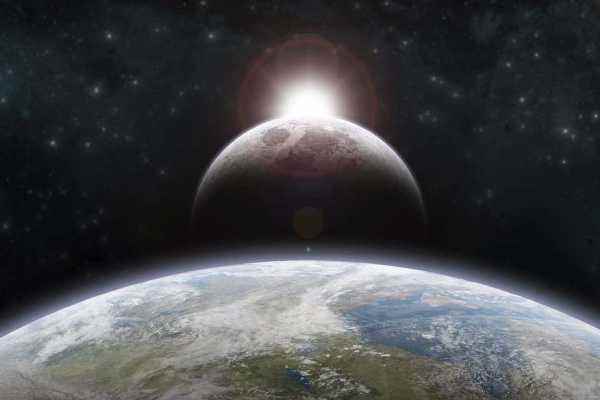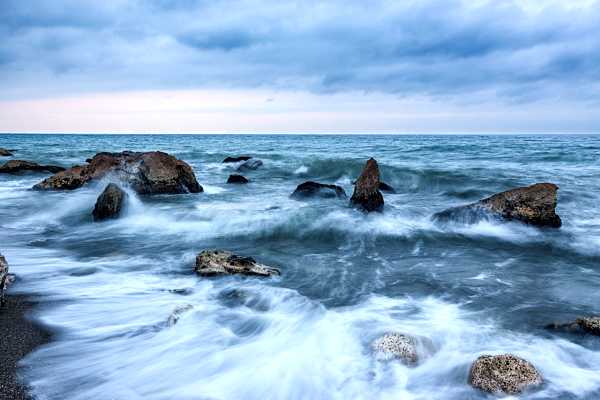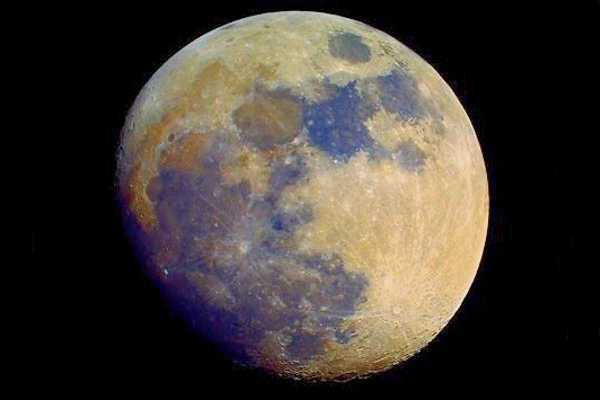We take our lunar partner, the Moon, for granted. We gaze at it casually without a second thought. But if we stop and study it closely, we quickly discover it’s far more mysterious than it seems. Let’s explore some of the most intriguing celestial curiosities and see how strange our nearest neighbor can be.
We have been studying the Moon for thousands of years. While science has disclosed many facts, many mysteries remain unexplained. The more we know about our Moon, the more questions it raises. Some strange lunar curiosities defy known scientific principles.
Lunar Myths and Mysteries
For centuries, people have told stories to explain the Moon. Many cultures view the Moon as a powerful and mysterious force, often personified as a god or goddess.
These myths explore themes of love, wisdom, time, and the relationship between the Moon and other celestial bodies. The Moon connects to immortality, creates time, and influences Earth. These stories show how it captures our imagination and shapes cultural beliefs.
Ancient cultures developed elaborate lunar myths and mysteries to explain their observations. Narratives about the Moon are found in every culture. We may not use mythology to explain the Moon, but we aren’t much further along in answering the big questions about it.
For example, the ancient Greeks associated the Moon with the Goddess Selene. She is the daughter of two mythological giants, Hyperion and Theia. They are often depicted either riding sidesaddle or riding a chariot. She brings us the light of the Moon.
The Romans associated the Moon with the goddess Luna, from which we derive the word’s modern meaning. Many indigenous cultures worship the Moon as a god or goddess with power over the night sky and the tides.
One of the most interesting lunar myths and mysteries leads us to the term lunacy. This comes from folklore, which claims the full Moon causes people to lose their minds. It’s more likely that moonlight allows people to see better at night so they can act mischievously.
Celestial Curiosities From Myth to Science

As time went on, some thinkers started to question these old stories. They wanted to understand the Moon using careful observation and reason.
The ancient Greeks were among the first to try to figure out the Moon using a more scientific approach. Philosophers like Aristotle believed the Moon was a solid object. He studied its phases, noticing that it changed shape depending on where the Earth, Sun, and Moon were. Then, Hipparchus, an early astronomer, measured the distance from Earth and looked closely at how it moved in the sky.
In the 1600s, Galileo changed the way we saw the Moon. Using a telescope, he saw craters and mountains on the Moon’s surface—things no one had imagined before. This was a huge step in understanding the Moon scientifically. Around the same time, Johannes Kepler learned how the Moon orbits. This knowledge improved scientists’ understanding of its behavior.
These early scientists began to move away from myths and used objective evidence to learn about our Moon. Their work set the stage for all the discoveries that would follow.
Interesting Observations About the Moon
The celestial curiosities of our lunar partner pose questions humankind has been debating for eons. They have been the basis for mythologies and superstitions and the subject of scientific inquiry.
The biggest questions are simple: Where did it come from, or how did it get there? What is it made of, and how does it affect the Earth? What can we tell from measuring it and how it moves?
1. How Did The Moon Get There?
The first of our interesting observations about the Moon is perhaps the most important. How did it get there? The impact theory is the most widely accepted hypothesis about how it may have ended up in the Earth’s orbit. It states that the Moon resulted from a collision with another planet. The material left was collected to form our lunar partner. Another theory is that the Moon was a part of the Big Bang as a separate satellite, and the gravity of the Earth captured it.
These theories have problems. Unfortunately, the Moon is too large compared to the Earth to have been captured by the Earth’s gravitational pull. The big band theory explains why planets with heavier density are closer to the Sun, while the lighter ones are farther away. This means that the Earth and the Moon should have similar density. Since planets are spherical, we can estimate density by their diameter.
“What in blazes is our moon doing way out there? It’s too far out to be a satellite of Earth. It is too big to have been captured by the Earth. If the moon is neither a true satellite of the Earth nor a captured one, what is it? How did it get there?” ― Isaac Asimov
When we can answer how it got there, it will illuminate all the other unanswered questions. We begin our quest by finding out what the Moon is made of. If the Moon is made of a fragment of the Earth, it should have roughly the same density, age, and material. Scientists say the question. It will shed light on all other unanswered questions concerning our lunar partner. We know where it is. We don’t know exactly how it got there, which is one of the most interesting lunar curiosities.
2. What is the Moon Made of?
The Moon’s outer surface contains various hard metals, which is interesting. Minerals like rutile, ilmenite, and sphene are on the surface. These materials do not occur naturally. You must process them from an ore to get them, implying that these elements result from mining. Other rocks contain metals, such as brass and mica. They also found two unusual elements on the surface, uranium 236 and neptunium 237. Why is it unusual?

Uranium 236 is a long-lived radioactive nuclear waste material. It is a leftover element from atomic fuel reprocessed from uranium. Neptunium 237 is a by-product of nuclear reactors using plutonium. So, how did nuclear reactor waste get on the Moon?
They have discovered unknown iron particles impervious to rust. None of these metals and elements occur by any known natural process. They are, however, consistent with mining and milling operations. Analysis of these celestial curiosities deserves more attention.
Six Apollo missions were conducted between 1969 and 1972. These missions brought back 382 kilograms, or 842 pounds, of lunar rocks, core samples, pebbles, sand, and dust. These six space flights represent 2,200 separate samples from six different sites. As of 2019, NASA claims to have 85% of these samples.
However, NASA admits that 180 moon rock samples are missing. So, 180 samples, or approximately 126 pounds, are in private collections. A comprehensive study of the rock samples would give us valuable insight into some of these unanswered questions. Many of the lunar myths and mysteries surround how these samples were lost.
3. What is the Age of Our Lunar Partner?
What is the age of the Moon? It’s one of the interesting observations about the Moon, which is also a bit scary. Moon rocks are magnetized, yet our Moon has no magnetic field. How does this occur? Is it possible the magnetic field collapsed? Could this have happened when it broke off the Earth? Or perhaps it never had one? There is no information on which to date the age of the Moon.
How else could we date our lunar partner? We could use carbon dating. Radioactive decay for all particles is constant, no matter the atmosphere. Each particle has a unique decay rate. For example, the decay of potassium-40 to argon-40 is often helpful for dating rocks older than 20,000 years. The decay of uranium-238 to lead-206 helps date rocks older than 1 million years. Carbon 14 and 12 are better for dating organic material.
Here’s the problem. The oldest moon rocks, dated by carbon dating, show that the Moon is a billion years older than the Earth. The Harvard Astronomy Journey of 1973 reports one moon rock dated back 5.3 billion years, which is older than the estimated age of our solar system. How did this occur? Many think this is the most troublesome of all the strange lunar curiosities. If the Moon is much older than the Earth, many theories about how the galaxy formed are obsolete.
4. What is Wrong with the Moon?
We can estimate the density of a sphere by measuring its radius. The radius is the distance from the surface to the center. If the object is spherical, we can calculate volume using radius, then divide mass by the volume of the sphere to get density. Our lunar partner appears to be spherical.
Experts calculate the Moon’s density as 3.34, whereas the Earth’s is 5.5. What does this mean? It means the numbers don’t add up. If the Moon were a piece of the Earth, it would have a similar density. Mars has a density of 3.9, which is closer to Earth’s.
We could confirm these calculations by taking appropriately sized soil and rock samples. Unfortunately, the rock data from all our lunar missions is too small for this calculation.
All we know for sure is that the seven-mare basalt samples are lighter than similar rocks on Earth. It makes you wonder why the data for the other rock samples is unavailable. Many of the stones are now in private collections, so we cannot analyze these rocks. These rocks are NOT just celestial curiosities but clues to our immediate universe.

Lunar sample analysis shows the moon surface is made of depleted iron. This is consistent with a lower density of 3.34 grams per cubic centimeter. The question of the moon’s core is of debate. ― Space in the 21st Century by Richard S. Lewis
If the astronomical data are reduced, it is found that the data require that the interior of the moon is more hollow than a homogeneous sphere. ― Dr. Gordon MacDonald, NASA scientist 1962
The lunar orbiter experiments vastly improve our knowledge of the moon’s gravitational field, indicating the frightening possibility that the moon might be hollow. ― Dr. Sean C. Solomon, MIT 1969
A natural satellite cannot be a hollow object. Therefore, the moon appears to not be a natural satellite at all. ― Dr. Carl Sagan
Some of the most startling evidence comes from the crash of Apollo 13. Seismic instruments record reverberations lasting for three hours and twenty minutes. This vibration level indicates the crust has a depth of around 2 miles, leading researchers to conclude the crust is unusually light.
To put this in perspective, earthquake reverberations over 6.0 on the Richter Scale last only a few minutes because of the Earth’s density. The length of the reverberation indicates the Moon is exceptionally light or perhaps even hollow. What if it has a cavern inside? It’s another of the strange lunar curiosities.
5. How Do Lunar Myths and Mysteries Influence Earth?

Here’s something you may not have considered. Astronomers have made interesting observations about the Moon and how it dictates the Earth’s rotation speed and angle. Because of the Moon, the Earth rotates at 22.5 degrees from vertical. This exact placement creates the four seasons in both hemispheres. Our lunar partner has profoundly affected the evolution of life on the planet.
It would adversely affect the Earth if it were farther away or in a slightly different orbit. The angle of the Moon also affects the weather patterns on Earth. It influences the largest living thing on the planet, the ocean. Its lunar cycles influence tides far more than the Sun. The different moon phases are constant. They complete a complete revolution every 28 days.
The human body is 70% water, so the Moon affects us. Some believe lunacy is real, and it increases crime rates. The increase in light caused by the full Moon may be responsible for a slight increase because nighttime crimes are easier to commit.
6. What’s up with The Dark Side of the Moon?
Another of the Moon’s celestial curiosities is its rotation synchronized perfectly with the Earth. It rotates on its axis simultaneously at precisely the rate it takes to revolve around the Earth. We always see the same side. Thus, the Moon’s dark side was surrounded in lunar myths and mysteries until the Soviet Union sent a probe to take the first pictures in October 1959.
The astronauts of Apollo 8 were the first to see the Moon’s dark side in 1968. China was the first to land a vehicle on the dark side in January 2019. Even though the Moon is our closest space partner, we have done little to investigate it since landing there in July 1969 with Apollo 11.
7. What Does The Moon’s Celestial Alignment Indicate?
The Earth rotates 400 times faster than the Moon and turns 40,000 kilometers on its axis in a day, while the Moon’s turns 400. The Earth spins 366.259 times during one orbit of the Sun, and the Earth’s polar circumference is 366.175 times larger than the Moon’s.
Multiply the Moon’s circumference by the Earth; the result is 436,669,140 kilometers; this is 99.9% of the Sun’s circumference. Divide the Sun’s circumference, 4.379 million km, by the Moon’s, 10,921 km equals 400.970. Multiply by 10, you get the circumference of the Earth. When you divide the Sun’s size by the size of the Earth and multiply by 100, you get the Moon’s size; that is some coincidence.
Are all these mathematical alignments just coincidences? The number of alignments involved in the Earth-Moon-Sun system is nothing less than staggering. The Moon is a perfectly balanced and aligned sphere, completing a unique triune relationship with the Sun and the Earth.
8. Other Strange Lunar Curiosities, Lunar Myths, and Mysteries
Now it’s time to ask questions about our lunar partner, for which we have answers.
Questions:
1. Which celestial body has more craters: the Moon or the Earth?
2. The word “moon” comes from which ancient Roman goddess?
3. True or False: The Moon always shows the same face as the Earth.
4. What is the approximate distance from the Earth to the Moon?
5. During the Apollo 11 mission, which astronaut didn’t set foot on the Moon’s surface?
6. What is the scientific term for the phenomenon when the Moon appears larger while it’s low on the horizon?
7. Which hemisphere of the Moon contains the dark, flat regions known as “Mare”?
8. Apollo 11’s Neil Armstrong famously took “one small step for man, one giant leap for mankind.” However, what happened on his first step?
9. What is the ability of the full Moon to appear reddish during a total lunar eclipse called?
10. Who was the last person to walk on the Moon?
Answers:
1. The Moon has more craters than Earth because it’s not protected by an atmosphere.
2. The word “moon” comes from “Luna,” the ancient Roman goddess of the Moon.
3. True. The Moon is tidally locked, always displaying the same face toward Earth.
4. The distance from the Earth to the Moon is about 238,855 miles (384,400 kilometers).
5. Michael Collins piloted the Apollo 11 command module and remained in lunar orbit, so only Armstrong and Aldrin explored the surface.
6. The scientific term for the Moon appearing larger on the horizon is the “Moon illusion.”
7. The hemisphere of the Moon, which contains the dark, flat regions known as “Mare,” is on the near side.
8. When Armstrong took his first step on the Moon, his boot left a footprint, impressing the lunar soil.
9. The phenomenon of a red-tinged full Moon during a total lunar eclipse is called a “blood moon.”
10. The last person to walk on the Moon was Apollo 17 astronaut Gene Cernan in December 1972.
In Conclusion
All our observations about the Moon lead to more questions. That means the list of lunar myths and mysteries is growing. The investigation of Kuiper and Oort Belts is just getting underway. We may know more about the satellites of other planets in our solar system than we do about our closest neighbor.
Many ancient cultures used the Moon to determine a 13-month calendar. Using the 13 cycles of the Moon makes more sense than the 12-month calendar based on astrology.
We invite you to submit any suggestions or corrections. Science is constantly discovering new truths.
References
- Dr. Gordon MacDonald, NASA Scientist, 1962. Wikipedia
- Lunar Rock Densities — Linda M. V. Martel, Hawaii Institute of Geophysics and Planetology
- Dr. Carl Sagan, Organic Matter and the Moon
- Space in the 21st Century by Richard S. Lewis, The Archive
- NASA — Dr. Sean C. Solomon, MIT, 1969. Wikipedia
- National Library of Medicine, Full Moon Crime Rates
- Isaac Asimov on Astronomy, Mercury Press, 1963. The Archive
- Our Mysterious Spaceship Moon, 1975, Don Wilson. The Archive
